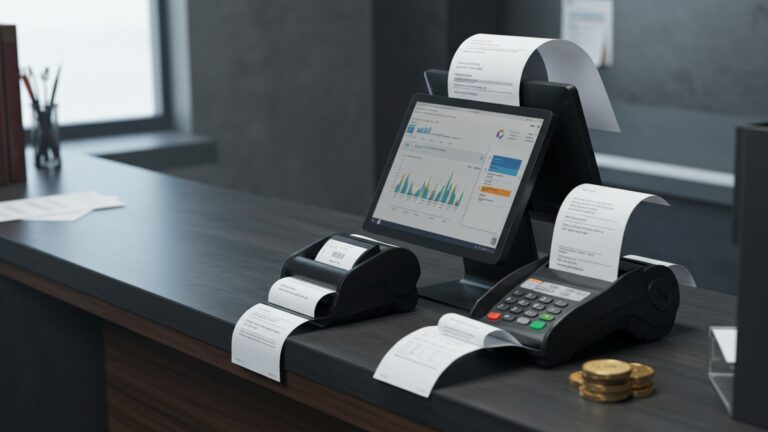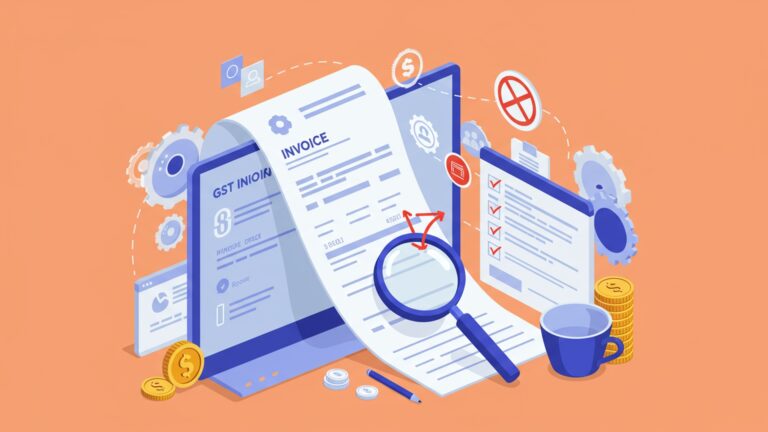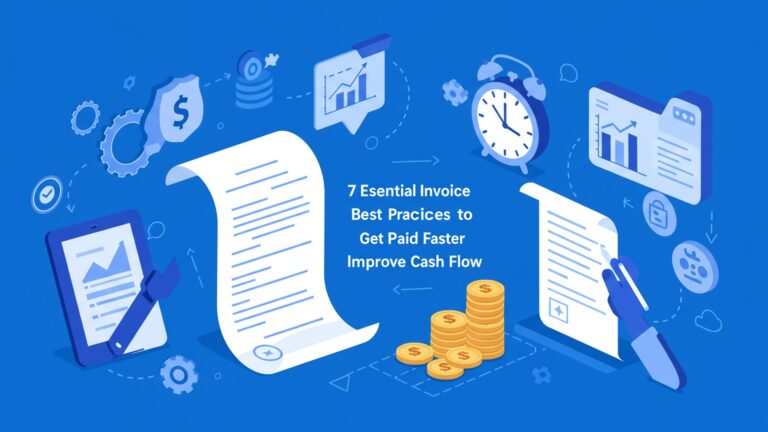10 Essential Tips to Prevent Billing Errors and Save Your Business Money
In today’s complex digital economy, a single billing error can cascade into significant financial losses, reputational damage. eroded client trust. As businesses increasingly manage intricate multi-currency transactions, dynamic subscription models. highly integrated automated invoicing systems, the risk of discrepancies has grown exponentially. Recent analysis reveals that the operational cost of rectifying just one incorrect invoice can far exceed the original discrepancy, often diverting critical resources from core activities. Successfully addressing these vulnerabilities requires a proactive strategy. Understanding how to prevent billing errors is not merely about preserving immediate cash flow; it’s about establishing robust financial integrity and reinforcing customer confidence in a landscape where data precision directly impacts long-term success.

1. Standardize Your Billing Process
To effectively prevent billing errors, establishing a clear, consistent. standardized billing process is paramount. This means defining every step from service delivery to invoice generation and payment collection. A standardized process reduces ambiguity and ensures that all team members follow the same protocol, minimizing the chances of oversight or misinterpretation.
A billing process typically involves several stages:
- Service Delivery/Product Sale
- Data Collection
- Invoice Generation
- Review and Approval
- Invoice Dispatch
- Payment Tracking and Reconciliation
The initial trigger for billing.
Gathering all necessary insights (client details, service hours, product quantities, agreed-upon rates).
Creating the invoice using a consistent template and format.
Internal checks before sending.
Sending the invoice to the client.
Monitoring payments and matching them to invoices.
Consider a marketing agency. If one project manager logs hours differently than another, or if pricing for similar services varies inconsistently, billing errors are inevitable. By standardizing how time is tracked (e. g. , using a specific time-tracking software with defined project codes) and how service packages are priced, the agency can significantly prevent billing errors and ensure fairness and accuracy across all client accounts. This consistency builds client trust and streamlines internal operations.
2. Implement Robust Contract Management
Effective contract management is a critical foundation for accurate billing. Billing errors often stem from a disconnect between what was agreed upon in the contract and what is actually billed. A robust system ensures that all contractual terms—pricing, payment schedules, service level agreements (SLAs). any special conditions—are accurately captured and translated into the billing system.
- Centralized Repository
All contracts should be stored in an easily accessible, secure location (e. g. , a cloud-based contract management system like
DocuSign CLM
or
ContractWorks
).
Key billing terms must be explicitly extracted and entered into your accounting or billing software. This includes service descriptions, unit rates, payment due dates. any recurring charges.
Ensure that any contract amendments or renewals are promptly updated and reflected in billing, preventing old terms from being applied inadvertently.
Imagine a SaaS company offering tiered subscription plans with varying features and user limits. If a customer upgrades their plan mid-cycle, the contract management system should immediately trigger an adjustment in their billing, prorating the charges accurately. Without this integration, an outdated subscription level might be billed, leading to undercharging, overcharging, or customer disputes. By meticulously managing contracts and linking them to billing parameters, businesses can effectively prevent billing errors and maintain strong client relationships.
3. Leverage Automation Software
Manual data entry is a primary culprit behind billing errors. Human oversight, typos. miscalculations are common when processes rely heavily on manual intervention. Automation software, such as accounting platforms and enterprise resource planning (ERP) systems, significantly reduces these risks by automating repetitive tasks like invoice generation, data input. payment reminders.
- Accounting Software
QuickBooks
,
Xero
,
Sage
automate invoicing, expense tracking. financial reporting.
SAP
,
Oracle NetSuite
integrate various business functions, including finance, sales. inventory, ensuring data consistency across departments.
Stripe Billing
,
Zuora
specialize in recurring billing, handling subscriptions, renewals. prorations automatically.
Comparison: Manual vs. Automated Billing
| Feature | Manual Billing | Automated Billing |
|---|---|---|
| Invoice Generation | Time-consuming, prone to human error. | Fast, accurate, uses templates, scheduled. |
| Data Entry | High risk of typos and inconsistencies. | Minimal manual entry, data pulled from integrated systems. |
| Payment Tracking | Manual reconciliation, easy to miss payments. | Automatic matching of payments to invoices, real-time updates. |
| Error Rate | Significantly higher. | Significantly lower, errors often flagged by system. |
| Scalability | Difficult to scale with business growth. | Easily scales as transaction volume increases. |
Automated systems are designed with built-in checks and balances. they integrate data from different modules (e. g. , sales, inventory, project management), ensuring that the insights used for billing is consistent and up-to-date. This holistic approach is essential to prevent billing errors at scale.
4. Conduct Regular Audits and Reviews
Even with robust systems in place, periodic audits and reviews are indispensable for identifying and rectifying billing errors before they escalate. Think of it as a financial health check for your invoicing process. These audits should not be reactive but scheduled proactively to maintain accuracy and compliance.
- Invoice Accuracy
- Payment Reconciliation
- Customer Data
- Policy Adherence
Compare generated invoices against contracts, service logs. delivery receipts. Check for correct pricing, quantities, discounts. tax applications.
Verify that all payments received match the invoices and that outstanding balances are accurate.
Ensure client contact insights, billing addresses. payment details are current.
Confirm that billing practices align with internal policies and external regulations.
A small e-commerce business decided to implement quarterly billing audits after noticing a pattern of discrepancies. In one audit, they discovered that a promotional discount code applied to a customer’s first purchase wasn’t automatically removed for subsequent recurring charges, leading to consistent underbilling. This proactive review allowed them to identify the software glitch, correct the billing for affected customers. prevent future financial losses. Regular audits are a powerful tool to prevent billing errors and protect your bottom line.
5. Train Your Team Thoroughly
Your team members are at the front lines of your billing process. their proficiency directly impacts accuracy. Inadequate training is a major contributor to billing errors. Investing in comprehensive and ongoing training ensures that everyone involved understands the procedures, the software. the importance of meticulous data entry.
- Software Proficiency
- Policy Adherence
- Data Entry Best Practices
- Conflict Resolution
- Regulatory Compliance
How to correctly use accounting, CRM. billing software.
Understanding internal billing policies, discount application rules. credit terms.
Emphasizing accuracy, consistency. verification steps.
How to handle customer billing inquiries and disputes professionally.
Awareness of relevant tax laws, data privacy (e. g. , GDPR, CCPA). industry-specific billing regulations.
A healthcare provider found a high incidence of coding errors leading to denied claims—a form of billing error. They implemented a mandatory monthly training program for their billing staff, focusing on updated medical coding guidelines and hands-on practice with their billing software. Within six months, their claim denial rate dropped by 20%, directly attributable to the improved accuracy of their trained staff. This demonstrates that continuous education is vital to prevent billing errors and maintain financial health.
6. Maintain Clear Communication with Clients
Many billing errors, or at least perceived errors, can be resolved or prevented through transparent and proactive communication with your clients. Misunderstandings about services rendered, pricing, or payment terms often lead to disputes, which can be as costly as actual errors. Clear communication fosters trust and reduces the likelihood of clients questioning their invoices.
- Detailed Invoices
- Pre-billing Notifications
- Dedicated Support Channel
- Terms & Conditions
Ensure invoices clearly itemize services or products, quantities, unit prices. any applicable taxes or discounts. Avoid vague descriptions.
For recurring services, consider sending a summary of upcoming charges before the invoice is generated, giving clients a chance to review.
Provide an easy way for clients to ask questions or dispute charges (e. g. , a dedicated email address or phone line for billing inquiries).
Make your payment terms, refund policies. dispute resolution process easily accessible and understandable.
A freelance graphic designer often includes a project scope document with clear deliverables and an estimated cost before starting work. When sending the final invoice, they reference specific project milestones and link them to the charges. This level of detail and upfront agreement significantly reduces client questions about “what they’re paying for,” helping to prevent billing errors stemming from misunderstandings and building a foundation of trust.
7. Reconcile Accounts Promptly
Account reconciliation is the process of comparing your internal financial records (e. g. , your general ledger) with external statements (e. g. , bank statements, client payment records). Prompt reconciliation is crucial because it allows you to identify discrepancies—such as unrecorded payments, incorrect charges, or missing invoices—as soon as they occur, rather than weeks or months later when they are harder to trace and fix.
- Early Detection
- Cash Flow Accuracy
- Fraud Detection
- Compliance
The sooner an error is found, the easier it is to investigate and correct.
Ensures your reported cash position is realistic.
Helps identify unauthorized transactions or internal theft.
Many financial regulations require regular reconciliation.
1. Gather all relevant financial statements (bank, credit card, payment gateway). 2. Compare each transaction on the statement with entries in your accounting software. 3. Identify and investigate any unmatched transactions or discrepancies. 4. Make necessary adjustments in your records to balance the accounts.
According to financial experts, daily or weekly reconciliation is ideal for businesses with high transaction volumes, while monthly reconciliation is the minimum standard for most. Procrastinating this task allows small inconsistencies to grow into significant problems. By making reconciliation a regular, non-negotiable activity, businesses can proactively prevent billing errors and maintain accurate financial records.
8. Utilize CRM/ERP Systems Effectively
Customer Relationship Management (CRM) and Enterprise Resource Planning (ERP) systems are powerful tools that, when used effectively, can dramatically reduce billing errors. These systems integrate customer data, sales details, project details. financial records into a single, unified platform. This integration eliminates data silos and ensures that the insights flowing into your billing system is consistent and current.
- Data Consistency
A CRM (e. g. ,
Salesforce
,
HubSpot
) ensures customer contact and billing data is accurate. An ERP (e. g. ,
SAP
,
Oracle NetSuite
) integrates this with product/service delivery data.
Sales orders created in the CRM can automatically generate invoices in the ERP or accounting system, removing manual data entry errors.
- Service Tracking
- Historical Data
For service-based businesses, project management modules within ERPs or integrated with CRMs can track billable hours and expenses directly, feeding this data into billing.
Access to a complete history of customer interactions, purchases. payments helps resolve billing inquiries quickly and accurately.
A manufacturing company used to have its sales team enter orders into one system, its production team track fulfillment in another. its finance team manually create invoices. This led to frequent mismatches between what was ordered, what was delivered. what was billed. Implementing an ERP system that unified these functions meant that a sales order automatically triggered production. upon completion, the system generated an accurate invoice based on the delivered goods. This seamless flow of data drastically helped to prevent billing errors, improving efficiency and customer satisfaction.
9. Set Up Internal Control Checkpoints
Internal control checkpoints are specific points within your billing process where data is verified, approved, or cross-referenced. These checks act as safeguards, catching potential billing errors before an invoice is sent out or a payment is processed incorrectly. They introduce a “second pair of eyes” to critical steps.
- Dual Authorization for Invoices
- Data Entry Verification
- Automated Threshold Alerts
- Segregation of Duties
Requiring two different individuals to review and approve an invoice before it’s sent to a client, especially for high-value transactions.
Having a second person quickly review key data points (e. g. , client name, amount, due date) entered into the system.
Setting up your accounting software to flag invoices that exceed a certain amount or deviate significantly from typical charges for a client.
Ensuring that the person who creates an invoice is not the same person who approves it or processes the payment. This reduces the risk of fraud and error.
For a small business, this might mean the business owner personally reviews all invoices generated by an administrative assistant before they are emailed. For a larger corporation, it could involve a dedicated billing supervisor performing random spot checks on a percentage of invoices. These checkpoints are simple yet highly effective strategies to prevent billing errors from reaching your clients or impacting your financial records.
10. Regularly Update Pricing and Service Catalogs
Outdated pricing and service catalogs are a surprisingly common source of billing errors. If your billing system or sales team is working with old rates, discontinued products, or expired promotional offers, invoices will inevitably be incorrect. Keeping these catalogs current is essential for accurate billing and consistent communication with customers.
- Centralized Catalog
- Scheduled Reviews
- Version Control
- System Integration
Maintain a single, authoritative source for all product/service pricing and descriptions.
Implement a regular schedule (e. g. , quarterly or annually) to review and update all pricing, discounts. service offerings.
Track changes to pricing and service terms, noting effective dates for new rates.
Ensure that your pricing catalog is directly integrated with your sales and billing systems so that changes are automatically reflected.
According to a study by the Association of Certified Fraud Examiners (ACFE), asset misappropriation, which includes billing schemes, is a significant threat. While not always fraudulent, outdated pricing can lead to similar financial losses for a business. Regularly updating your pricing and service catalogs. ensuring these updates propagate through all relevant systems, is a proactive measure to prevent billing errors, protect revenue. maintain compliance with agreed-upon terms. This also helps in addressing customer queries quickly if there are any changes in pricing or services.
Conclusion
Billing errors are more than mere inconveniences; they are silent profit drains that erode customer trust. From my vantage point, the most effective defense lies in proactive vigilance, transforming your billing process from a reactive chore into a strategic advantage. Consider the ripple effect: a single mispriced item, say a special coffee blend, on one invoice can multiply into significant discrepancies across daily sales, impacting inventory and reconciliation. This is where modern solutions shine. The recent surge in integrated POS software, which I’ve personally seen revolutionize small businesses, practically eliminates manual data entry errors that plagued older systems. My advice? Don’t just audit; implement real-time checks and empower your team with intuitive tools. By embracing these essential tips, you’re not just preventing financial leaks; you’re building a foundation of accuracy and reliability that will foster customer loyalty and propel your business towards sustained growth.
More Articles
How to Optimize Your Billing Process Using Modern POS Software Solutions
A Complete Guide to Choosing the Best POS Software for Retail
How to Easily Set Up Mobile POS Software for Your Small Business
7 Essential Features Your Restaurant Billing Software in India Must Have
10 Factors to Select the Best POS System for Your Indian Restaurant
FAQs
Seriously, how much of a problem are billing errors for businesses?
They can be a huge headache! Not only do they directly cost you money through lost revenue or incorrect charges. they also damage your reputation, create extra work for your team. can even sour customer relationships. It’s much more than just a minor annoyance.
Beyond just ‘lost money,’ what are the specific ways billing errors hit my bottom line?
Billing mistakes can cost you in several ways: undercharging clients (lost revenue), overcharging (leading to chargebacks and refunds), staff time spent correcting errors, potential legal fees. even losing customers due to frustration. It’s a drain on resources from multiple angles.
What’s one of the easiest, most impactful things I can do to start preventing billing errors right away?
A great first step is to establish a clear, standardized process for invoicing and payment collection. This means having consistent templates, defined steps for review. clear communication channels. Consistency dramatically reduces the chances of things slipping through the cracks.
Is there any tech out there that can actually make a difference, or is it all about manual checks?
Absolutely! Billing and accounting software can be a game-changer. It automates calculations, tracks payments, generates invoices. often flags discrepancies. While human oversight is still crucial, good software significantly reduces manual errors and frees up your team for more strategic tasks.
Besides the money part, do billing mistakes also affect how customers view my business?
Definitely! Nothing sours a customer experience faster than being incorrectly charged or having to chase down an invoice discrepancy. It erodes trust, makes your business seem unprofessional. can easily lead to customers taking their business elsewhere. Happy customers are repeat customers. accurate billing is key to that.
Is it better to spend time preventing errors in the first place, or just have a solid system for catching them after they happen?
Prevention is almost always better than a cure, especially with billing errors. While having a robust review process to catch errors is crucial, actively preventing them saves a lot more time, money. headaches in the long run. Think about it: fixing an error takes more effort than just doing it right the first time.
Are these error prevention tips really applicable to small businesses, or are they more for large corporations?
These tips are incredibly relevant for businesses of all sizes! In fact, small businesses often feel the pinch of billing errors even more acutely because their resources are tighter. Implementing good practices early on can set a strong foundation for growth and save a lot of pain down the road, regardless of your company’s size.






